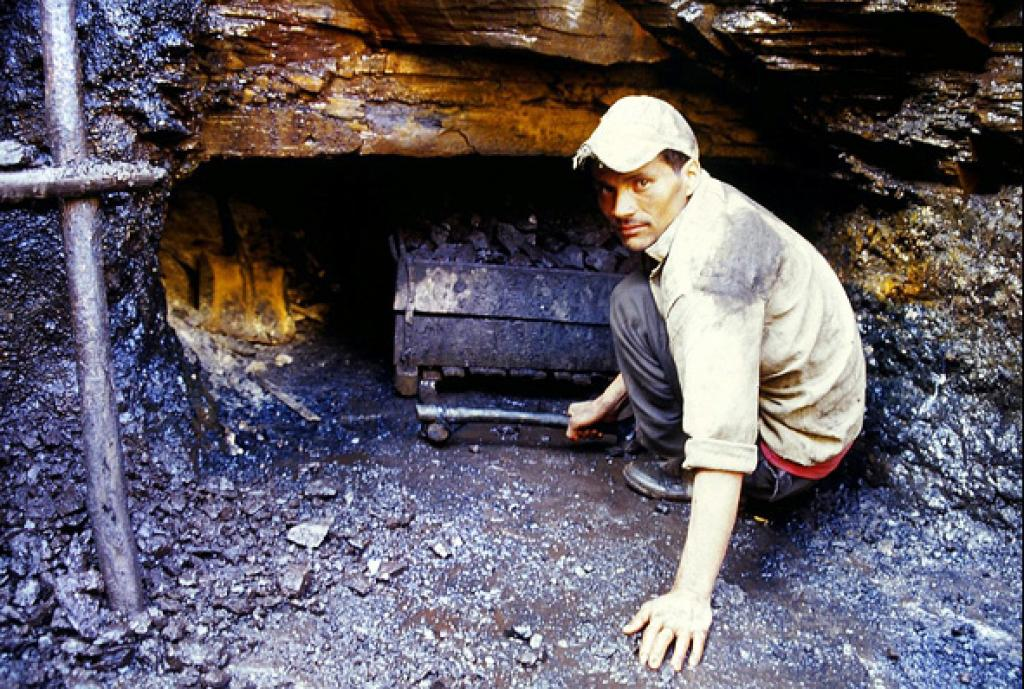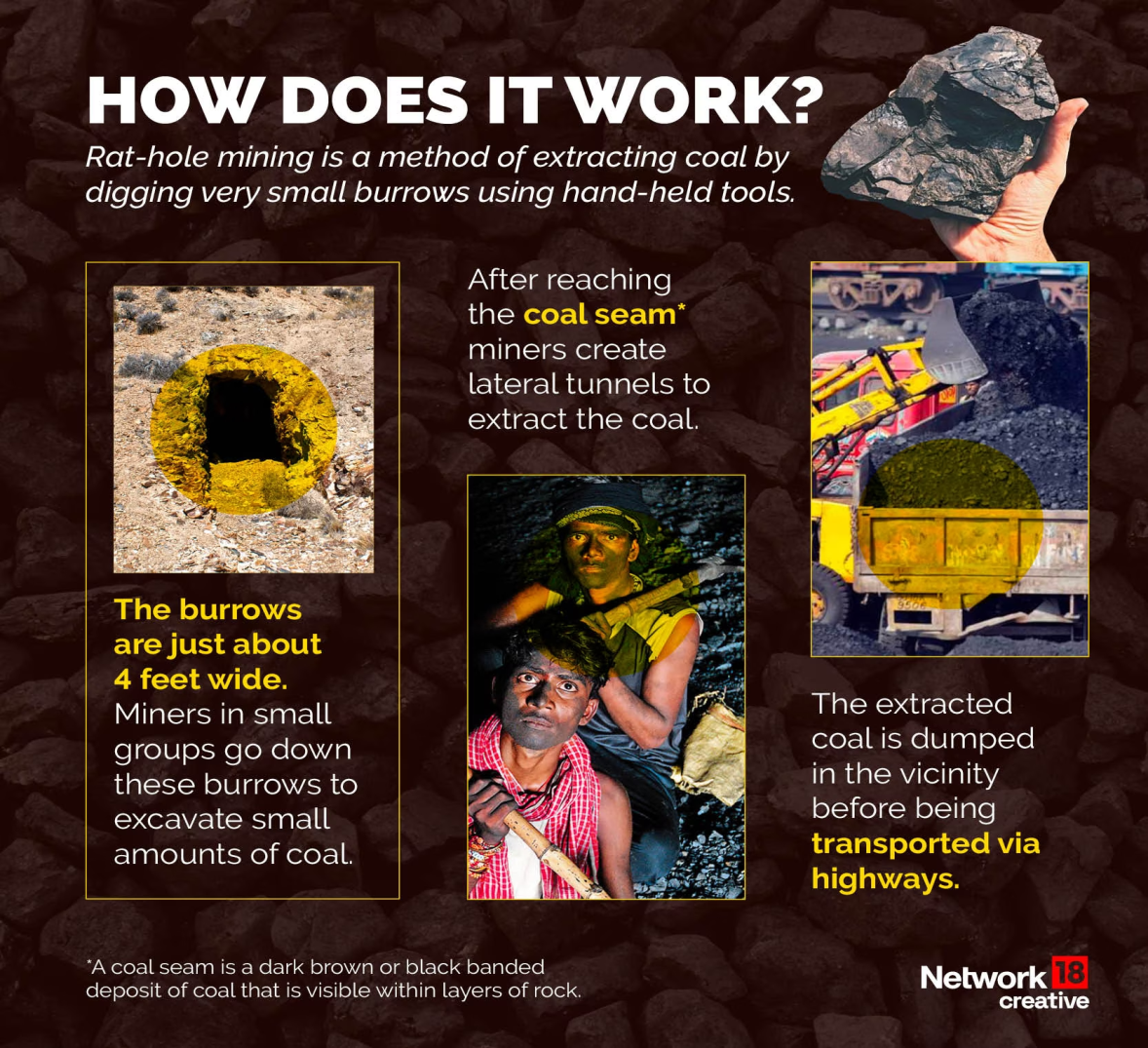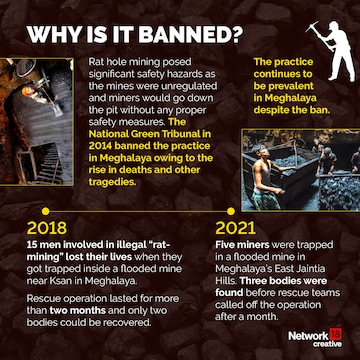Free Courses Sale ends Soon, Get It Now


Free Courses Sale ends Soon, Get It Now



Copyright infringement not intended
Picture Courtesy: https://www.downtoearth.org.in/news/mining/the-unregulated-lethal-and-corrupt-world-of-meghalaya-s-rat-hole-mines-62507
Context: The efforts of the Justice Brojendra Prasad Katakey committee to tackle Meghalaya's environmental issues stemming from rat-hole coal mining involve addressing several intricate challenges.
Details
Issues Identified by the Katakey Committee
Restoration Efforts and Recommendations
Rat-hole coal mining
|
Rat-hole mining has been a subject of regulatory scrutiny and legal challenges due to its hazardous nature and environmental impacts. In India, the National Green Tribunal (NGT) banned rat-hole coal mining in Meghalaya in 2014 due to its adverse effects on the environment and safety hazards for miners. |
The Process

Environmental Impact
Health and Safety Concerns
Regulatory Framework

Social and Economic Context
The Challenge of Balancing Livelihoods and Environmental Protection:
Potential Solutions:
Conclusion
Source:
|
PRACTICE QUESTION Q. Rat-hole mining is a vital source of income for many households in certain regions, however, it is certainly unsafe and environmentally damaging. Consider the socioeconomic aspects involved and provide a viable approach that transforms these communities away from rat-hole mining while ensuring their well-being. |
© 2024 iasgyan. All right reserved